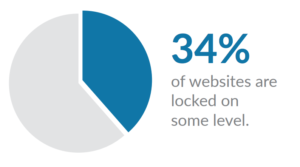
After a large rainstorm, it became very evident that my gutters were no longer doing what they were intended to do.
Unless water spilling over the edge of the gutters and filling a 5-gallon bucket like it was a shot glass is normal.

I did what every rational person would do, jammed a long 2×4 to raise the gutter up to stop the leak.. and it worked! Well, in that specific location.
As great of a solution that was, I decided maybe it would be better to get a professional to do a more “Long-term” fix.
I called a specialized gutter company to give me a quote, the salesperson arrived on time and was incredibly kind.
![]() He went around the house for an hour and a half measuring stuff and looking at his tablet in a state of confusion, like he was handling some really tough trigonometry.
He went around the house for an hour and a half measuring stuff and looking at his tablet in a state of confusion, like he was handling some really tough trigonometry.

Eventually, the numbers must have come together and he came to me with the quote.
The cost of the job was definitely higher than I was expecting, especially since I looked up the cost of materials at Home Depot.
After the sticker shock, he asked if he could do a couple more measurements. Whatever he found must have been good, because he came back with a cost that was $200 more than the original quote. (Not all construction or designers are like this)
Oddly enough, he did not explain the reasoning for the sudden price hike, and yet he was shocked when I did not want to buy immediately.
The thing is when his pricing jumped for no reason, I moved from thinking that this company was calculating labor and materials to give me a standard price, to thinking –
he is just trying to rip me off.
Because of his inability to explain the pricing structure, he lost any chance of a sale due to my newly found distrust in him and his company.
What does this mean for your business?
Be upfront with your pricing, and your customers will trust you more and buy from you more.
How to build trust through Price Transparency
To build trust with your buyers you must be clear about what your pricing is, and if it is a service, how the price is calculated.
For B2C, this comes as no shocker. Although for B2B, the typical response is:

Trust me, I get it! B2B is complicated, it involves a lot of variables, volume pricing, service tiers, etc.
For this reason, many businesses have said it is not possible for them to show pricing to the general public, and their exact reasoning is most likely one of these:
1. We do not want competitors to see our pricing
In the past years, I have researched thousands of B2B eCommerce sites from a variety of industries and I am always shocked to see how many of them choose either:
A. Lock their site from the general public; or
B. Hide pricing from non-logged in visitors.
This behavior is very common in heavily competitive markets that are selling very similar goods.
Their focus relies so heavily on competitive pricing for their current customers, that they do not offer pricing to visitors on their site.

Sadly, the main reason most people go to eCommerce sites is to find something they have an immediate need for, and demand a streamlined digital commerce experience that will allow them to accomplish that.
By not showing pricing, you have added a lot of friction to the sales process that will most likely end up with the prospect leaving the site and purchasing from a competitor that offers a function website for their needs.
So what is the best tactic?
Show standard pricing for a single product purchase, if you wish to encourage larger orders from new buyers, include volume pricing.
On top of that, include a large call-to-action mentioning lower prices can be accomplished through an established customer account to encourage repeat purchases and more buyer savings.
2. Our pricing is too complicated
Pricing is not always straightforward and exact, but this is not an excuse to not be transparent.
Like the gutter explanation told previously in the blog, my issue with the company was not based on the price, but the fact that the price seemed to be randomly chosen out of a hat and had no explained reasoning.

For those companies that have these complex pricing structures, the best thing to do is honest on how your pricing structure is equated.
So what is the best tactic?
Show how you quote your customers.
Do not focus on how to be exact, but focus on the variables that play a role in your pricing, these could be: cost of labor, goods, customer service, etc.
You just need something that can help your prospects generate a pricing range for your offer.
Whatever these costs are, they should be clearly shown on your website. Events that expose customer later in the sales process to hidden fees or unexpected costs will be a sure cause for distrust.
3. Not displaying pricing is a lead generation tactic
Commonly businesses feel like mystery is a great tactic for lead generation. I am not one to judge, I have created a lot of content that are questions to provoke engagement and form submissions.

This tactic is excellent for content marketing, but not for your business’s pricing.
Recently, I have experienced this tactic on the Dun & Bradstreet website (dnb.com).
I found myself wandering around their site looking for any identification of the pricing, but I did not find anything!
So what do I do? I go back to Google and search for a website that is not DnB.com to give me their pricing.
As you can imagine, I stumble upon a lot of negative reviews, a very complicated outdated pricing sheet, and their competitor Experian.
Due to the fact that DnB.com can not tell me ANYTHING about their pricing structure, I have immediately perceived them as a company that intends to charge me as much as possible.
This experience led to me losing all trust in Dunn and Bradstreet, and if a time to purchase this service arose, it would lead me to immediately purchase from Experian instead without thinking twice.
So what’s the best tactic?
Be upfront with your pricing, but you can leave a small hint of mystery for lead generation.
If you have a complicated pricing structure, explain it to your best ability, but use a CTA of “Contact Us for a Quote” that will be more precise based on the customer’s inputs.
These articles can be sent directly to your mailbox! Well your digital mailbox.
aka – Your email
[mc4wp_form id=”428″]




